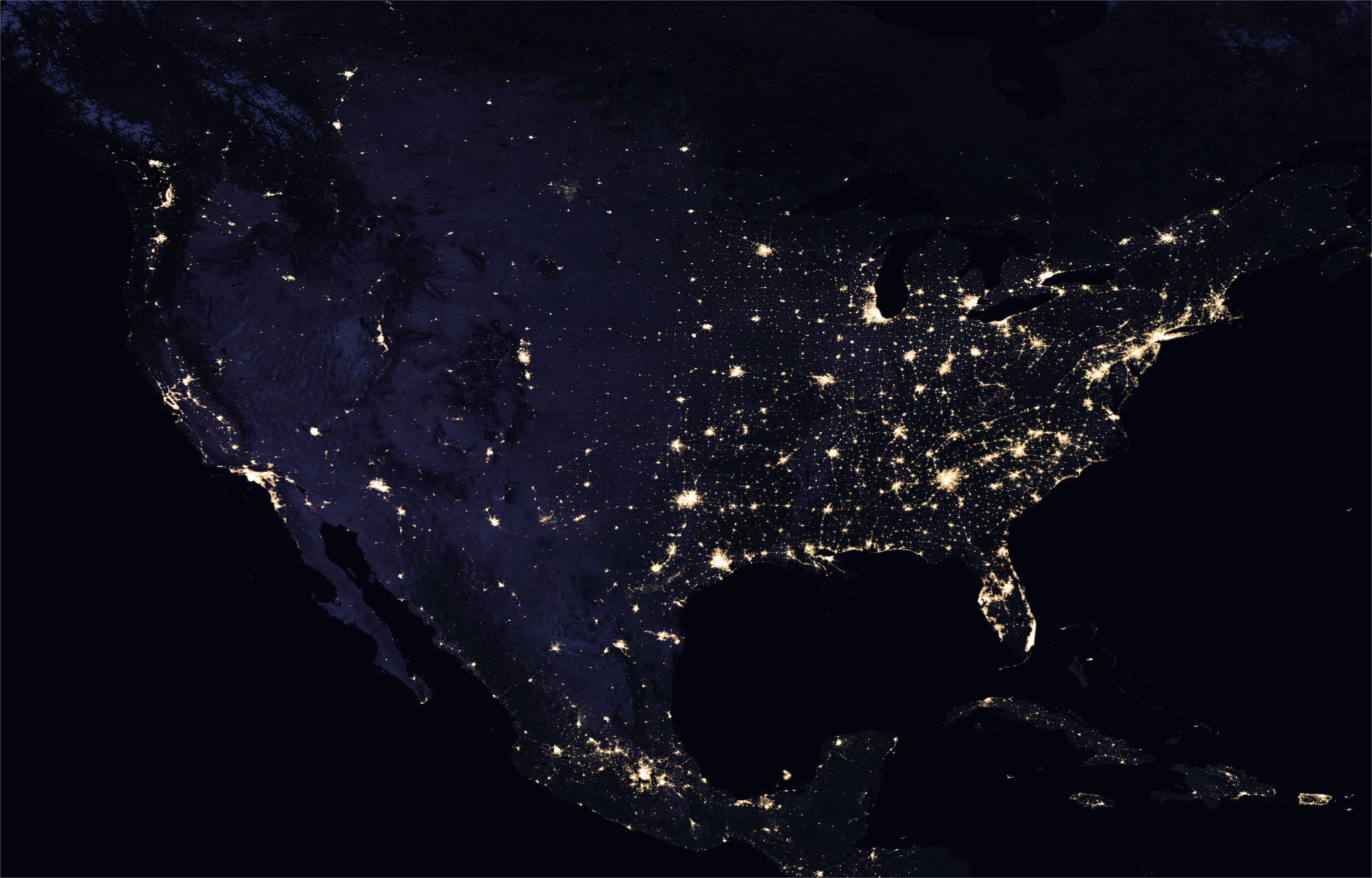Did 2020 Break the Internet?
An examination of network demands in the face of the coronavirus.

Published by The Lawfare Institute
in Cooperation With

The coronavirus pandemic led to the abrupt transition of all aspects of life in cyberspace. Beginning in early March 2020, students adapted to remote learning, white-collar professionals adjusted to indefinite work-from-home policies, doctors conducted telehealth appointments, online workouts soared in popularity, and television binge-watching skyrocketed. Internet traffic surged to unprecedented levels almost overnight, and this level would not change. The coronavirus crisis indisputably served as the internet’s biggest stress test to date. Yet network operators and consumers dispute how well the internet performed. At the end of the day, this disagreement boils down to the wrong framing of what defines “the internet.”
The Initial Surge of Internet Traffic
“Internet traffic” refers to the amount of data passing through networks, and the volume of traffic is generally measured in bits. Regarding performance, speed matters. There are two ways to measure internet speed—latency and bandwidth. Latency measures how long it takes a bit to travel from one place to another and is therefore measured in units of time, such as milliseconds (1/1,000 of a second). Bandwidth measures how many bits can get from one place to another in a given period and is therefore measured in bits per second. Packet loss, another important metric for internet reliability, measures how many bits reach their intended destination. Most discussions of internet performance focus on bandwidth, but latency and packet loss are also important indicators of user experience.
Internet traffic as a whole, however, is difficult to measure. The internet consists of many interconnected networks as well as a three-level hierarchy of service providers. Tier 1 networks, such as the internet giants AT&T, Level 3, and Sprint, run the internet’s “backbone,” which is composed primarily of ultrafast fiber optic cables. Tier 1 providers then interface with Tier 2 internet service providers (ISPs), such as Comcast or Cox Communications, that handle regional traffic. Tier 3, or “last mile,” providers then deliver the internet to a customer’s home or office. Tier 2 and 3 networks are generally privately owned. Therefore, aggregated data from private companies, such as ISPs, content delivery networks (CDNs), and edge providers, offer the clearest insight into general internet traffic even if one company does not capture the full picture.
Akamai Technologies, one of the largest CDNs, reported data showing a significant rise in traffic during March 2020. CDNs distribute content, such as popular videos, files, or HTML code, by keeping a copy (called a cache) closer to the end user. Caches enable CDNs to improve website performance and load times. On April 6, 2020, Akamai’s CEO Tom Leighton wrote, “From our vantage point, we can see that global internet traffic increased by about 30% during the past month.” He explained, “That’s about 10x normal, and it means we’ve seen an entire year’s worth of growth in Internet traffic in just the past few weeks.” While informative, this data is specific to Akamai and therefore might not represent traffic patterns as a whole. However, this measurement can be used as a floor, and internet traffic likely increased by at least this much and probably by much more.
Other companies reported similar trends of escalating internet traffic. The Internet & Television Association described how cable companies witnessed “a 19 percent increase in peak downstream traffic and a 33 percent increase in peak upstream traffic” during March 2020 alone. Similarly, wireless internet service providers, which primarily serve rural parts of the United States, reported a 36 percent increase in average traffic as of March 23. On March 30, network management software company ASSIA reported that total Wi-Fi upload traffic had increased by 80 percent. Upload traffic served as a particularly important indicator during the pandemic since many of the new online activities require much stronger upload speeds than traditional internet activities. These new virtual activities, such as teleconferencing or online teaching, are data-intensive activities that require symmetrical, robust internet speeds unlike checking e-mail or watching a YouTube video, which rely primarily on download speeds.
Changes in Where People Got Online: Residential vs. Business Internet
The change in internet consumption coincided with a geographic shift in where people connected. Rather than connecting from public, educational, or business locations, which have more robust enterprise connections, people began connecting from home. Businesses generally invest in higher bandwidth services, known as enterprise or business internet. Describing the difference between residential and business internet services, Verizon states, “Residential internet often has restricted upload speeds and comes with only best-effort service agreements, while business internet demands faster upload speeds in order to perform operations. In addition, ISPs provide guaranteed service and uptimes for business internet.” In other words, residential internet focuses on high download speeds while throttling upload speeds, whereas business internet generally offers symmetrical download and upload speeds. Business internet is also generally two to five times faster than residential connections and can offer a dedicated line so that a business does not need to share its connection with neighbors. Residential internet, by contrast, struggles with significant congestion.
Congestion in residential (Tier 3) networks occurs for a variety of reasons, such as outdated infrastructure or oversubscribed neighborhood nodes. While fiber optic cables largely make up the backbone (Tier 1) networks, only 10 percent of Americans had “fiber to the home” as of 2017. BroadbandNow’s recent inquiry found an increase in this proportion, with 32 percent of Americans having fiber coverage. The cable and phone companies that provide last-mile home broadband offer primarily outdated cable or copper networks that can develop bottlenecks at network nodes where multiple lines converge. An oversubscribed neighborhood node results in households competing for bandwidth. In addition, cable’s shared network nodes were originally built to deliver entertainment and therefore vastly prioritize download over upload capacity.
Changes in Peak Times
The pandemic changed the way people used the Internet. Whereas before, internet traffic dropped on the weekends, during the pandemic ISPs and CDNs observed only a minor dip if any at all. Akamai noted that “weekends have ceased, at least from a traffic perspective.” Independent researchers observed the same temporal shift with workdays progressing to weekend-like activities. This is because customers used the internet for business and education during the week and then transitioned to streaming videos and gaming during the weekends. In addition, rather than meeting friends and family in person on the weekends, which would result in lower weekend internet usage, people resorted to virtual meetings during the pandemic.
Sustained High-Water Marks
After the initial surge in March, American internet traffic did not return to pre-coronavirus levels. Instead, internet traffic sustained the high-water marks throughout 2020. Internet traffic typically increases from month to month and year to year. For instance, Akamai generally sees 3 percent growth in internet usage each month. However, Akamai saw an unprecedented increase in internet usage that extended beyond just March 2020. Similarly, Cloudflare saw a significant leveling off of internet traffic from April to December 2020, demonstrating the “new normal” of internet traffic (see Figure 1). The question then remains at what rate internet traffic will continue to increase moving forward. Akamai CEO Tom Leighton predicts “traffic [will] continue to grow in 2021 but at a rate more in line with pre-2020 historical levels.”
Figure 1. Cloudflare’s analysis of U.S. internet traffic distribution in 2020.
Two Competing Narratives: Resilient Network vs. Service Degradation
The year 2020 undeniably presented the biggest stress test for the internet to date. However, there is no clear consensus on how it performed. Instead, two competing narratives have emerged. Network engineers and operators argue that the internet ultimately prevailed when confronted with a sudden increase in traffic. End users, cities, and edge providers, by contrast, argue that the internet ultimately buckled, resulting in a serious degradation of quality. In fact, the data suggests that both answers are justified. The internet backbone continued to function, and packets were consistently delivered to their destinations. However, users still experienced significant degradation from congestion of last-mile networks as well as strained capacity of edge providers.
First, let’s examine the narrative regarding the internet’s resiliency. Network engineers assert that the internet passed with flying colors when tested with a sudden surge of traffic. Matthew Prince, the co-founder and CEO of Cloudflare, explained that the internet can survive a few hours of Super Bowl traffic, so it can handle a sustained spike “for four weeks or four months or however long this heightened period of time happens.” He stated that the internet does not simply “wear out” by increased use like a car. Backbone service providers also echoed that confidence and reassured customers that their networks were prepared. On March 21, Verizon stated, “Verizon’s fiber optic and wireless networks have been able to meet the shifting demands of customers and continue to perform well.” Kyle Malady, Verizon’s CTO, reiterated Matthew Prince’s confidence in the network that “Verizon operates its networks every day as though it’s a snow day.”
The data on backbone providers’ performance largely supports this narrative, as shown by analysis of Tier 1 carriers’ packet loss and latency. The U.S. company Noction probed Tier 1 carriers’ networks and found a slight uptick in packet loss and latency values mid-March. After mid-March, packet loss and latency largely leveled off.
However, ThousandEyes, a network intelligence company, probed Tier 1, Tier 2, and Tier 3 carriers and found a significant increase in network outages during March 2020. For North American ISPs, there were 65 percent more outages in March 2020 as compared to January 2020. However, the ThousandEyes report concluded that the network disruptions were due not to network congestion but instead to network maintenance. To support the network maintenance theory, ThousandEyes pointed to the fact that performance indicators, such as packet loss and latency, remained within tolerable ranges from March to June, demonstrating there was no systemic duress. Instead, network disruptions occurred largely outside of business hours. Yet taken together with Noction’s analysis that there was a slight uptick in packet loss and latency in mid-March, the increased outages suggest that network operators were beginning to see the signs of network stress and upgraded accordingly.
Not everyone bought the ISPs’ triumphant narrative. Doug Dawson, a broadband industry expert, expressed his skepticism: “By ‘handling’ the volumes [the ISPs] mean that their networks are not crashing and shutting down. But I think there is a whole lot more to these headlines than what they are telling the public.” An examination of sluggish upload speeds as well as internet performance metrics at the city and neighborhood levels revealed significant degradation during the pandemic.
Household upload connections became major choke points for traffic with the increase in two-way video conversations. Known as the “upload crisis,” the upload path becomes susceptible to overload, especially when transmitting over the coaxial cable and telephone DSL networks that most neighborhoods rely on. ISPs have the power to configure the balance of download and upload traffic. However, the current Data Over Cable Service Interface Specification (DOCSIS) standard, which enables internet access over existing coaxial cables, limits the upload traffic to no more than 10 percent of the total bandwidth.
Numerous anecdotes demonstrate the upload crisis as well as residents competing with business internet service, as shown by reddit user jgoodm of Los Angeles. In April 2020, jgoodm asked how to improve his internet speeds. He explained, “My direct neighbor just installed Spectrum Business class at his house and he is a film editor. He is moving terabytes of data all morning editing a movie. As soon as he starts work in the morning, my ping times and latency get terrible, my VoIP becomes unusable and my kids online schooling becomes too choppy to actually use.” Internet bandwidth becomes a zero-sum game where enterprise services, which are guaranteed, ultimately throttle residential services. Unfortunately, similar node congestion in neighborhoods and apartment complexes has been an all too frequent experience during the work-from-home era.
An examination of city and neighborhood internet performance further points to strained networks. Of the top 200 U.S. cities, 88 cities (44 percent) experienced some level of network degradation. Three cities (Austin, Texas; Winston-Salem, North Carolina; and Oxnard, California) deviated from their 10-week median download speed range by more than 40 percent. In addition, the number of counties that failed to meet the Federal Communications Commission’s minimum standard for broadband connectivity rose from 1,708 counties (52.8 percent) in February 2020 to 2,012 counties (62.2 percent) in March 2020. This city- and county-level data reveal that the national trends do not tell the full story of the internet’s resilience. Households endured significantly different internet degradation depending on their particular neighborhood or city. While 2020 didn’t break the Tier 1 carriers, there is a strong indication that it exposed the cracks of the internet at the regional and neighborhood levels.
Defining “the Internet”: A Classic Category-Mistake
What does it mean for “the internet” to break? While the term “the internet” is now thrown around widely to refer to a global platform for information and communication, it is useful to ground the term in its original definition. In 1974, internet founders Vinton Cerf and Robert Kahn published “A Protocol for Packet Network Interconnection.” While the paper did not explicitly use the term “internet,” it described “internetwork” protocols (TCP/IP) that would enable networks to communicate with one another. In 1995, the Federal Networking Council (FNC) unanimously passed a resolution providing the first official definition of the internet. In the inaugural definition, the FNC described the internet as “the global information system that … is able to support communications using the Transmission Control Protocol/Internet Protocol (TCP/IP) suite or its subsequent extensions/follow-ons, and/or other IP-compatible protocols.” The seminal Cerf-Kahn paper and the FNC definition underscore the important fact that the internet itself is not a network. Instead, the internet is the protocols and rules that allow multiple networks to communicate with each other.
Since the internet is the rules that enable other networks to communicate, it represents a larger conceptual framework than each individual network on its own. Instead, conflating the internet with an individual network is a classic example of a “category-mistake.” Philosopher Gilbert Ryle introduced the concept of a category-mistake in 1949 through a simple story. Ryle told the tale of a tourist visiting Oxford. After viewing the various colleges, libraries, museums, and administrative offices, the tourist asked, “But where is the University?” As Ryle explained, “the University'' is simply the way in which all of the buildings the tourist had already seen are organized. In essence, a category-mistake is a logical error.
Similarly, the concept of “the internet” is the larger category of how all of the various networks connect and communicate. It is the overall aggregation of connected networks—whether it be a home network, business network, or university network—rather than any one individual network. The internet cannot fail unless all of the individual networks fail, which is a highly unlikely scenario. Therefore, the network operators’ narrative that the internet didn’t collapse when faced with surging traffic during the coronavirus pandemic may be true, but it also hides the ball. This triumphant conclusion obscures the degradation experienced within individual and regional networks






